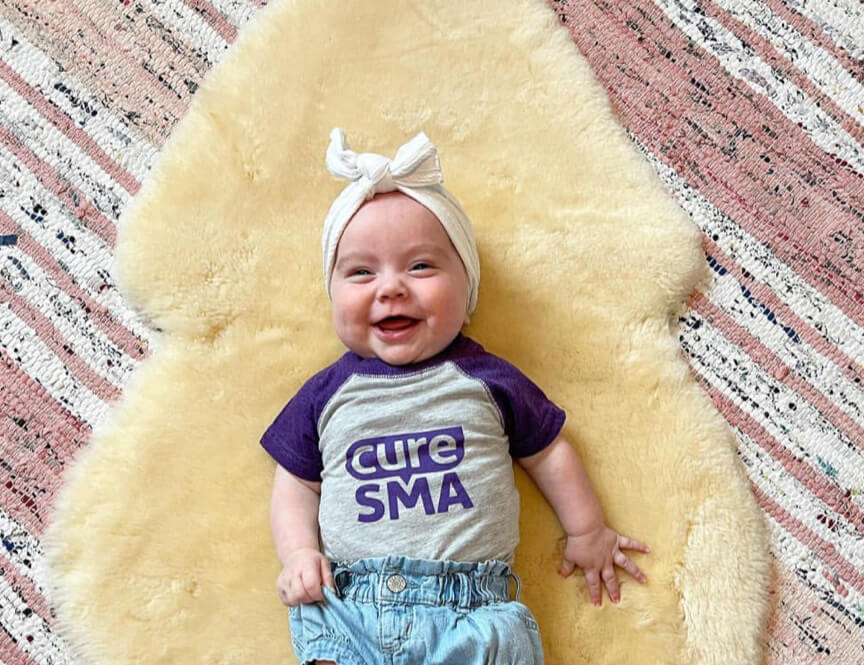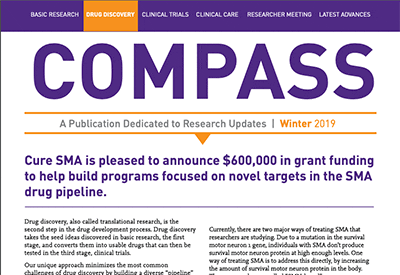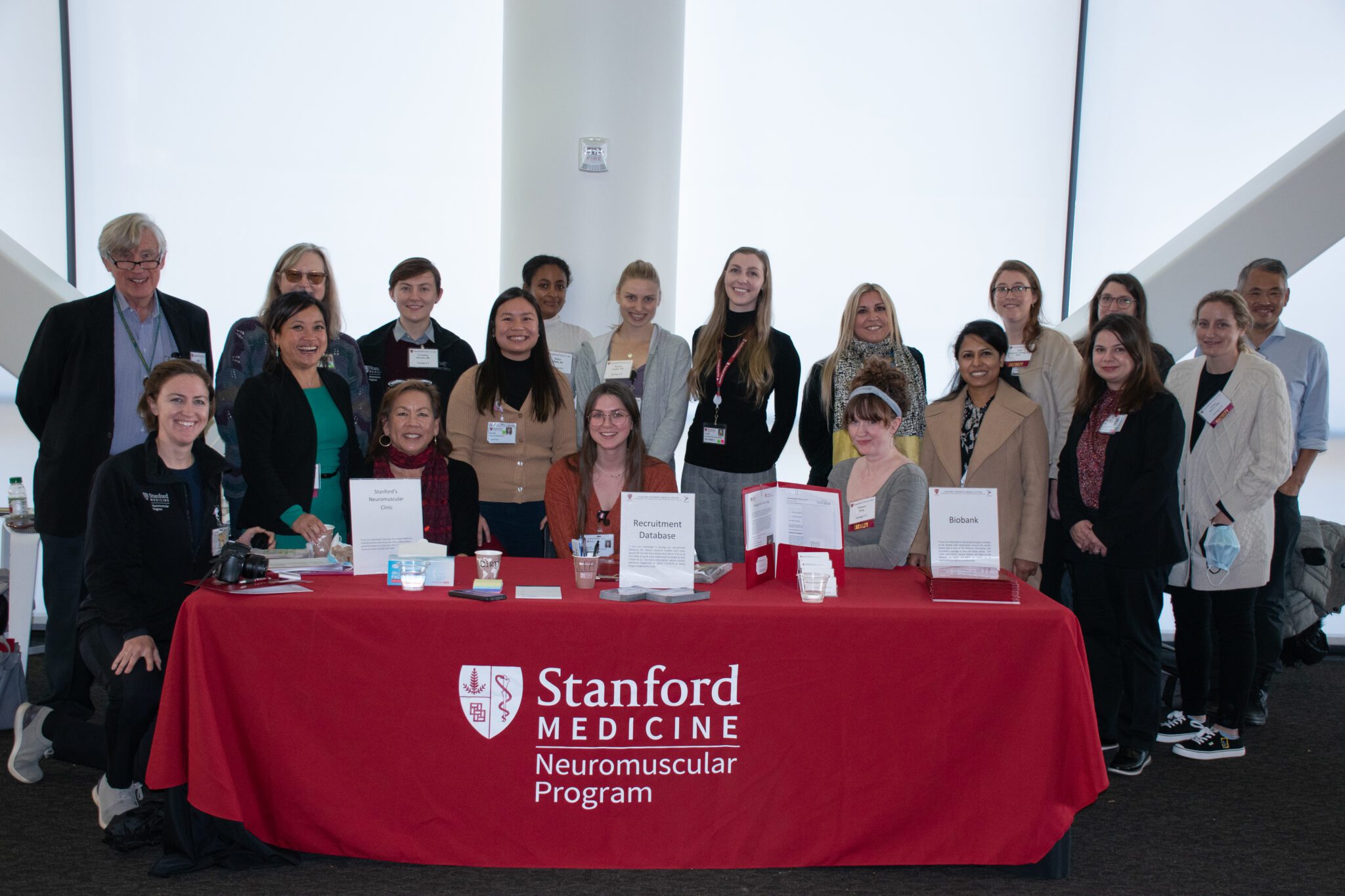Genentech, a member of the Roche Group (SIX: RO, ROG; OTCQX: RHHBY), announced today interim clinical data from the dose-finding parts of the pivotal FIREFISH and SUNFISH studies investigating risdiplam (RG7916) in spinal muscular atrophy (SMA). In the FIREFISH study in Type 1 SMA, six out of 14 infants (43 percent) were able to sit (with or without support), including three (21 percent) who achieved unassisted stable sitting after eight months of treatment. In addition, four infants (29 percent) demonstrated rolling to the side; seven (50 percent) kicking and six (43 percent) achieved upright head control. These milestones were assessed according to the Hammersmith Infant Neurological Examination (HINE) Module 2 and are key secondary endpoints in the confirmatory part of FIREFISH.
The data were presented at the 23rd International Annual Congress of the World Muscle Society in Mendoza, Argentina. Roche and Genentech are leading the clinical development of risdiplam, an oral SMN2 splicing modifier, as part of a collaboration with the SMA Foundation and PTC Therapeutics.
Updated analyses of the Children’s Hospital of Philadelphia Infant Test of Neuromuscular Disorders (CHOP-INTEND), a scale developed to assess motor function in infants with Type 1 SMA, demonstrated that eight out of 14 infants in FIREFISH (57 percent) achieved a score of 40 or above at their eight-month visit. Typically, an infant with Type 1 SMA does not demonstrate any motor improvement and can decline during this time period. The median CHOP-INTEND scores increased over time (37.5 at 6 months [n=20] compared to 41.5 at eight months [n=14]). The median age at first dose in FIREFISH was 6.7 months and median treatment duration was 9.5 months. Nineteen out of 21 infants enrolled (90 percent) remain alive with two having discontinued due to the fatal progression of their disease. Three patients are now over 24 months old. No infant has required a tracheostomy or permanent ventilation since study initiation, and no infant has lost the ability to swallow. The most common adverse events were fever (pyrexia; 52.4 percent), diarrhea (26.8 percent), upper respiratory tract infections (19 percent), ear infections (14.3 percent), pneumonia (14.3 percent), constipation (14.3 percent), vomiting (14.3 percent), cough (14.3 percent) and upper respiratory tract inflammation (14.3 percent).
In Part 1 of the SUNFISH study in Type 2 and 3 SMA, SMN protein median increases of greater than two-fold, as measured in blood, were seen after 12 months. A very broad patient population aged between two to 24 years was included, ranging in functional status from weak non-ambulant to strong ambulant, and with varying degrees of scoliosis from none to severe. Twenty-one patients initially received lower doses of risdiplam for at least 12 weeks. Of the patients treated with risdiplam for at least one year (n=30), the median change from baseline in Motor Function Measure (MFM), the primary endpoint in the confirmatory part of SUNFISH and a scale used to assess motor function in neuromuscular diseases, was a 3.1-point improvement. Sixty-three percent of patients experienced an improvement in MFM over baseline of three points or more after one year. Such improvements were seen both in patients under 12 years old (76 percent; n=17) and over 12 years old (46 percent; n=13). When considering patients who experienced any amount of improvement over baseline, the percentages were 70 percent overall, 76 percent for the younger age group, and 62 percent for the older patients. Serious adverse events that occurred in two or more of the 51 patients exposed to risdiplam were nausea (4 percent), upper respiratory tract infection (4 percent) and vomiting (4 percent). To date there have been no drug-related safety findings leading to withdrawal from any study.
Follow-up is ongoing for the confirmatory Part 2 portions of both the FIREFISH and SUNFISH studies.
About risdiplam
Risdiplam is an investigational, oral medicine that is systemically distributed and designed to increase SMN protein levels in the central nervous system (CNS) and throughout the body. It is designed to help the SMN2 gene produce more functional SMN protein, to better support motor neurons and muscle function. Roche and Genentech are leading the clinical development of risdiplam in collaboration with the SMA Foundation and PTC Therapeutics. Risdiplam is currently being evaluated in three multicenter trials in people with SMA:
- FIREFISH – an open-label trial in infants aged one to seven months with Type 1 SMA
- SUNFISH – a double-blind, placebo-controlled trial in children and young adults (two to 25 years old) with Type 2 and 3 SMA
- JEWELFISH – an open-label exploratory trial in people aged 12–60 with Type 2 or 3 SMA who have been previously treated with SMN-targeting therapy as part of a clinical study
A new trial, RAINBOWFISH in pre-symptomatic SMA, will be initiated by early 2019.
About FIREFISH
FIREFISH is an open-label, two-part pivotal clinical trial in infants with Type 1 SMA. Part 1 was a dose escalation study in 21 infants. The primary objective of Part 1 was to assess the safety profile of risdiplam in infants and determine the dose for Part 2. Part 2 is a pivotal, single-arm study of risdiplam in approximately 40 infants with Type 1 SMA for 24 months, followed by an open-label extension. The primary objective of Part 2 is to assess efficacy as measured by the proportion of infants sitting without support after 12 months of treatment, as assessed in the Gross Motor Scale of the Bayley Scales of Infant and Toddler Development – Third Edition (BSID-III) (defined as sitting without support for 5 seconds).
About SUNFISH
SUNFISH is a two-part double-blind, placebo-controlled pivotal clinical trial in children and young adults (two to 25 years old) with Type 2 and 3 SMA. Part 1 determined the dose for the confirmatory Part 2, and enrollment in Part 2 completed in September 2018.



